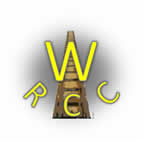

Wrenn Railways Collectors Club

The WRCC Wagon Range
Produced by the Wrenn Railways Collectors Club
The range is listed below. The number in brackets refers to the original quantity produced for that particular "Limited Edition". Where items are marked (no longer available) the full limited edition stock has been sold. However, we list the entire range to keep members informed of previous editions.
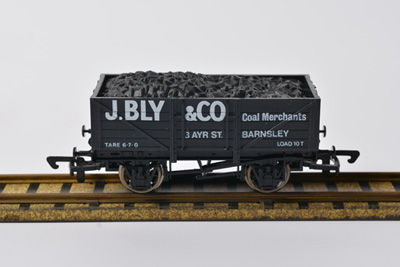 J.
Bly & Company were coal merchants in Ayr Street, Barnsley, Yorkshire. There were many coal mines in
the area over the years, including:-
J.
Bly & Company were coal merchants in Ayr Street, Barnsley, Yorkshire. There were many coal mines in
the area over the years, including:-
Barnsley Main Colliery – Finally closed in 1991 after a temporary initial
closure in 1966. Just East of the town
Cortonwood – Closed in 1985 Located 8km SE of town
Darfield – Closed in 1989 Located 8km East of town
Dearne Valley – Closed 1989 Located 10km SE of town
Dodworth – Closed 1987 – Known locally as Redbrook Colliery – 2km
West of the town
Goldthorpe – Closed 1994 – Located 10km East of the town
Grimethorpe – Closed 1992 – Made famous by the Grimethorpe Colliery Band
and the location for the film "Brassed Off" – Located 6km NE of town
Hickleton – Closed 1986 – Located at Thurnscoe, 10km East of the town
Houghton Main – Closed 1992 – Located 8km East of the town
North Gawber – Closed 1984 – Located 4km NW of the town
Royston – Closed 1989 – Located 8km North of the town
Up until 1984 Yorkshire boasted 56 coal mines. Now in 2013 only 2 are still open, that of the Hatfield Mine near Doncaster and the Kellingley Mine, located between Wakefield and Selby.
Original Wrenn Wagon: Issued as W5000 – this was a 5-plank wagon with coal load. It was dark green with the Company name "J.Bly & Co" in yellow with black shadowing. The remaining text was in white.
WRCC Wagon: Issued as W5000 (WRCC1) – this was a 5-plank wagon with coal load. It was issued without a chassis. It was produced in black with all printing in white lettering. 250 were commissioned, each wagon coming with a pair of limited labels authenticating the number made.
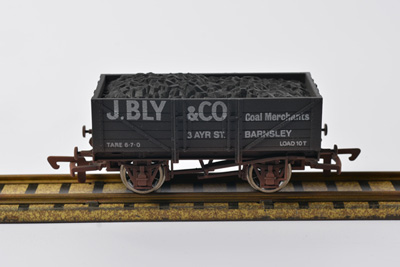 J. Bly & Company were coal
merchants in Ayr Street, Barnsley, Yorkshire. There were many coal mines in the area over the years,
including:-
J. Bly & Company were coal
merchants in Ayr Street, Barnsley, Yorkshire. There were many coal mines in the area over the years,
including:-
Barnsley Main Colliery – Finally closed in 1991 after a temporary initial
closure in 1966. Just East of the town
Cortonwood – Closed in 1985 Located 8km SE of town
Darfield – Closed in 1989 Located 8km East of town
Dearne Valley – Closed 1989 Located 10km SE of town
Dodworth – Closed 1987 – Known locally as Redbrook Colliery – 2km
West of the town
Goldthorpe – Closed 1994 – Located 10km East of the town
Grimethorpe – Closed 1992 – Made famous by the Grimethorpe Colliery Band
and the location for the film "Brassed Off" – Located 6km NE of town
Hickleton – Closed 1986 – Located at Thurnscoe, 10km East of the town
Houghton Main – Closed 1992 – Located 8km East of the town
North Gawber – Closed 1984 – Located 4km NW of the town
Royston – Closed 1989 – Located 8km North of the town
Up until 1984 Yorkshire boasted 56 coal mines. Now in 2013 only 2 are still open, that of the Hatfield Mine near Doncaster and the Kellingley Mine, located between Wakefield and Selby.
Original Wrenn Wagon: Issued as W5000 – this was a 5-plank wagon with coal load. It was dark green with the Company name "J.Bly & Co" in yellow with black shadowing. The remaining text was in white.
WRCC Wagon: Issued as W5000 (WRCC1) – this was a 5-plank wagon with coal load. It was issued without a chassis. It was produced in black with all printing in white lettering. 250 were commissioned, each wagon coming with a pair of limited labels authenticating the number made.
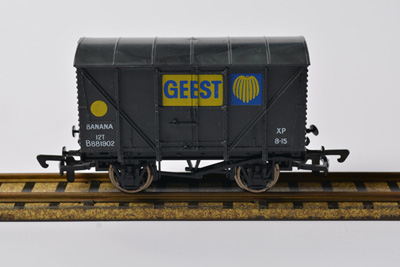 One of a pair of Geest
Vans (Black)
One of a pair of Geest
Vans (Black)
Geest are famous of course for their name being associated with bananas. However Geest plc is now a large producer and distributor of ready meals and other chilled foods. They in fact sold their banana business in 1996. The name Geest originated in the Netherlands where the company was started by the Van Geest family. They were originally growers of flowers and expanded into England importing Dutch bulbs. John Van Geest then left the family firm in 1935 to set up his own business of growing bulbs in Lincolnshire for sale to the English market as opposed to importing them from Holland. Business grew and he started importing different vegetables for sale to the British public after the war when fresh food was still difficult to obtain. He then started to import bananas which were becoming popular thanks to the already established Irish importer, Fyffes.
Original Wrenn Wagon: Issued as W5007 & W5007A – These were Banana Vans. W5007 was brown and W5007A was issued in grey.
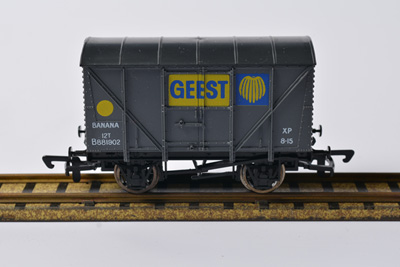 One of a
pair of Geest Vans (Grey)
One of a
pair of Geest Vans (Grey)
WRCC3 Geest Banana Van (Grey) Geest are famous of course for their name being associated with bananas. However Geest plc is now a large producer and distributor of ready meals and other chilled foods. They in fact sold their banana business in 1996. The name Geest originated in the Netherlands where the company was started by the Van Geest family. They were originally growers of flowers and expanded into England importing Dutch bulbs. John Van Geest then left the family firm in 1935 to set up his own business of growing bulbs in Lincolnshire for sale to the English market as opposed to importing them from Holland. Business grew and he started importing different vegetables for sale to the British public after the war when fresh food was still difficult to obtain. He then started to import bananas which were becoming popular thanks to the already established Irish importer, Fyffes.
Original Wrenn Wagon: Issued as W5007 & W5007A – These were Banana Vans. W5007 was brown and W5007A was issued in grey.
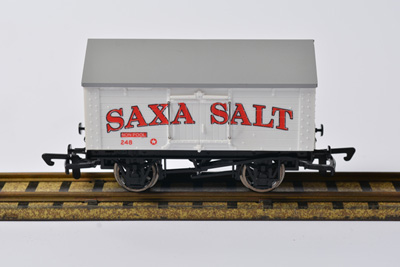 Originally a brand of salt
started by Cerebos in 1907. Later, Cerebos became part of the Rank Hovis McDougal Group but then in
2007 became the property of Premier Foods.
Originally a brand of salt
started by Cerebos in 1907. Later, Cerebos became part of the Rank Hovis McDougal Group but then in
2007 became the property of Premier Foods.
Original Wrenn Wagon: Issued as W4665 Saxa Salt Van in Orange/Yellow with lettering in red with black outline.
WRCC Wagon: Issued as W4665 (WRCC4) in white with black lettering. Sold without a chassis. Commissioned as a run of 100 examples, due to some problems with roof finishing; only 70 were made available to buyers. Again, the wagon came with a pair of limited labels authenticating the number made. Please note that as the labels had been pre-ordered, that they state a limited run of 100 examples.
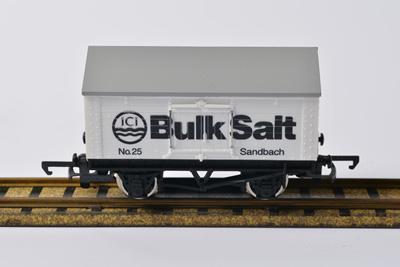 Most salt in the UK
originated from the Cheshire area and was transported by road or rail to the docks at Liverpool.
Although the Salt Union were the largest supplier of salt in the UK, they were taken over by ICI just
before the war in 1937.
Most salt in the UK
originated from the Cheshire area and was transported by road or rail to the docks at Liverpool.
Although the Salt Union were the largest supplier of salt in the UK, they were taken over by ICI just
before the war in 1937.
Original Wrenn Wagon: Issued as W5101 "ICI Bulk Salt" Salt Van in Grey with white lettering.
WRCC Wagon: Issued as W5101 (WRCC5) in white with black lettering. Commissioned as a run of 100 examples, due again to some problems with roof finishing; only 70 were made available to buyers. As before, the wagon came with a pair of limited labels authenticating the number made. Please note that as the labels had been pre-ordered, that they state a limited run of 100 examples (as with WRCC4).
 The Jaffa or Shamouti
orange was originally developed from a Chinese sweet orange and grown in vast orange groves in the
area of the port city of Jaffa in Israel. It was first produced for export in Jaffa hence the origin
of the name. The area is also well known for other fruit varieties such as citrons, lemons,
pomegranates and mandarin oranges.
The Jaffa or Shamouti
orange was originally developed from a Chinese sweet orange and grown in vast orange groves in the
area of the port city of Jaffa in Israel. It was first produced for export in Jaffa hence the origin
of the name. The area is also well known for other fruit varieties such as citrons, lemons,
pomegranates and mandarin oranges.
Original Wrenn Wagon: Issued as W5105 Jaffa Banana Van in Grey
WRCC Wagon: Issued as W5105 (WRCC6) in orange with a green roof. Commissioned as a run of 100 examples. The wagon came with a pair of limited labels authenticating the number made.
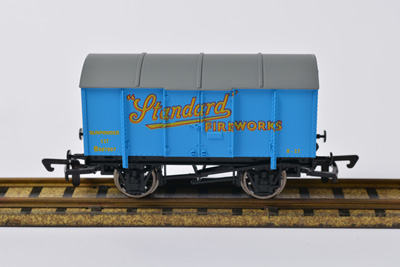 Established in 1891 (as per my article in a recent Wrenn Tracker), The Standard
Fireworks Company was to become the largest manufacturer of fireworks in the UK. Due to the very
nature of their business, they were ideally placed to supply munitions to the Government during both
World War 1 and World War 2. In 1988 Standard Fireworks bought a rival company based in Hemel
Hempstead and Sanquhar, that of Brocks Fireworks. Standard were then themselves bought by the Chinese
manufacturer Black Cat Fireworks in 1998, but whilst the production of fireworks was moved to China,
Huddersfield remains the Head Office of the company in the UK.
Established in 1891 (as per my article in a recent Wrenn Tracker), The Standard
Fireworks Company was to become the largest manufacturer of fireworks in the UK. Due to the very
nature of their business, they were ideally placed to supply munitions to the Government during both
World War 1 and World War 2. In 1988 Standard Fireworks bought a rival company based in Hemel
Hempstead and Sanquhar, that of Brocks Fireworks. Standard were then themselves bought by the Chinese
manufacturer Black Cat Fireworks in 1998, but whilst the production of fireworks was moved to China,
Huddersfield remains the Head Office of the company in the UK.
Original Wrenn Wagon: Issued as W4313P as a Standard Fireworks Gunpowder Van in brown or green.
WRCC Wagon: Issued as W4313P (WRCC7) as a Standard Fireworks Gunpowder Van in Sky Blue. Commissioned as a run of 100 examples. The wagon came with a pair of limited labels authenticating the number made. There was a small overrun of this issue of 10 Vans. These were sold off without limited edition certificates.
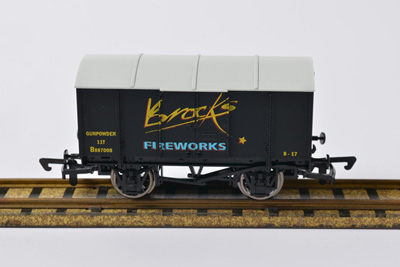 This was the first Private Owner Van produced for the WRCC that had not previously been
made by Wrenn.
This was the first Private Owner Van produced for the WRCC that had not previously been
made by Wrenn.
Brocks was the oldest fireworks company in the UK and was originally based in London, and then Hemel Hempstead and finally Swaffham in Norfolk and Sanquhar in Scotland. It was bought by Standard Fireworks in 1988.
WRCC Wagon: Issued as W5200 (WRCC8) as a Brocks Fireworks Gunpowder Van in black. Commissioned as a run of 100 examples. The wagon came with a pair of limited labels authenticating the number made.
 The Jaffa or Shamouti
orange was originally developed from a Chinese sweet orange and grown in vast orange groves in the
area of the port city of Jaffa in Israel. It was first produced for export in Jaffa hence the name
origin. The area is also well known for other fruit varieties such as citrons, lemons, pomegranates
and mandarin oranges.
The Jaffa or Shamouti
orange was originally developed from a Chinese sweet orange and grown in vast orange groves in the
area of the port city of Jaffa in Israel. It was first produced for export in Jaffa hence the name
origin. The area is also well known for other fruit varieties such as citrons, lemons, pomegranates
and mandarin oranges.
Original Wrenn Wagon: Issued as W5105 Jaffa Banana Van in Grey
WRCC Wagon: Issued as WRCC9 in lemon yellow. Commissioned as a run of 100 examples. This issue complimented the previous Jaffa Van release (WRCC6) to follow the "Oranges & Lemons" WRCC17 S R Coal Wagon 5-Plank theme. The wagon came with a pair of limited labels authenticating the number made.
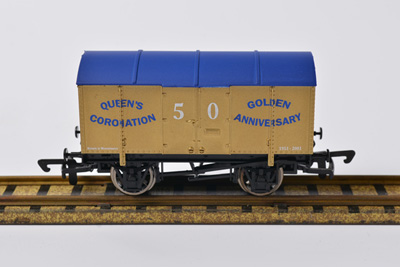 This was the 2nd Van not issued by Wrenn but commissioned by the WRCC. Dapol had
produced a fine limited edition Gunpowder Van in deep blue to mark the accession of Queen Elizabeth II
to the throne in 1952 but decided not to produce a similar van to mark the 50th Anniversary of the
Coronation in 2003.
This was the 2nd Van not issued by Wrenn but commissioned by the WRCC. Dapol had
produced a fine limited edition Gunpowder Van in deep blue to mark the accession of Queen Elizabeth II
to the throne in 1952 but decided not to produce a similar van to mark the 50th Anniversary of the
Coronation in 2003.
WRCC Wagon: Issued as WRCC10 in 2003 as a 50th (Golden) Anniversary Coronation Gunpowder Van in gold.
Commissioned as a run of 150 examples. The wagon came with a pair of limited labels authenticating the number made.
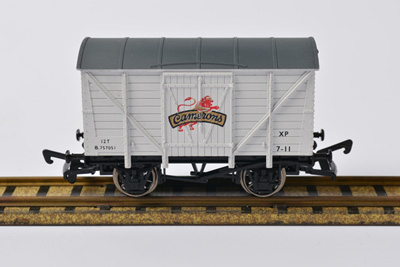 This was the 3rd Van not issued by Wrenn but commissioned by the WRCC. Many collectors
had asked for limited edition Brewery Vans to be commissioned by the WRCC and it was difficult to
choose as there are so many different breweries now both large and small. However it was decided to
choose Camerons who work out of the Lion Brewery in Hartlepool.
This was the 3rd Van not issued by Wrenn but commissioned by the WRCC. Many collectors
had asked for limited edition Brewery Vans to be commissioned by the WRCC and it was difficult to
choose as there are so many different breweries now both large and small. However it was decided to
choose Camerons who work out of the Lion Brewery in Hartlepool.
They are an old established Brewery first formed as Camerons in 1865. They have been bought and sold many times during the 1900s but were finally purchased by the Castle Eden Brewery in 2002. One of the other reasons they were chosen for this issue was in fact that Camerons were one of the few companies that issued a Commemorative item to remember VJ (Victory in Japan) day. This was a beautifully inscribed pint glass.
WRCC Wagon: Issued as WRCC11 as Camerons Brewery Ventilated Van in white. Commissioned as a run of 100 examples. The wagon came with a pair of limited labels authenticating the number made.
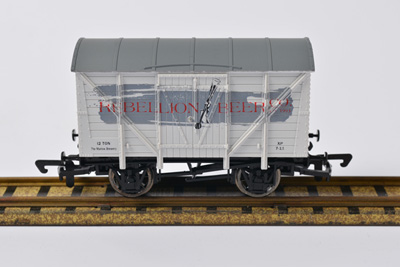 This was the 2nd Brewery Van not issued by Wrenn but commissioned by the WRCC. The
Rebellion Brewery is one of the new microbreweries producing outstanding quality beer. There are now
more than 400 in the UK. Based in Marlow, Buckinghamshire, the brewery first started in 1993. The
original brewery in Marlow was Thomas Wethered but they shut their doors in 1987. As the Rebellion
Brewery grew they were able to buy tanks and other equipment from larger, long-established breweries
that fell by the wayside – these included Brakspears of Henley, Morrells of Oxford, Flowers of
Cheltenham and Morlands of Abingdon. An additional fortuitous purchase was from Courage of Reading.
They had been using a "mini-brewery" to experiment with new beers but when this was no longer needed,
The Rebellion Brewery managed to acquire it and this for them was a full sized brewery!
This was the 2nd Brewery Van not issued by Wrenn but commissioned by the WRCC. The
Rebellion Brewery is one of the new microbreweries producing outstanding quality beer. There are now
more than 400 in the UK. Based in Marlow, Buckinghamshire, the brewery first started in 1993. The
original brewery in Marlow was Thomas Wethered but they shut their doors in 1987. As the Rebellion
Brewery grew they were able to buy tanks and other equipment from larger, long-established breweries
that fell by the wayside – these included Brakspears of Henley, Morrells of Oxford, Flowers of
Cheltenham and Morlands of Abingdon. An additional fortuitous purchase was from Courage of Reading.
They had been using a "mini-brewery" to experiment with new beers but when this was no longer needed,
The Rebellion Brewery managed to acquire it and this for them was a full sized brewery!
There is a well known saying that real ale doesn't travel, and it simply wasn't possible for the national brewers to produce quality real ale in huge centralised breweries and transport the beer across hundreds of miles to the pubs without loss of quality in taste. Real ale is a living product where the yeast continues to ferment and produce intense flavours in the cask, and as such it is un-filtered, un-pasteurised and doesn't have preservatives pumped into it. Microbreweries only sell to their immediate areas, thus allowing them to produce excellent real ales that will not deteriorate with extensive journey times.
As a little snippet, you see many happy cows in the Marlow area, partly because the Rebellion Brewery recycle their fresh and highly nutritious spent brewer's grains to feed local livestock!
WRCC Wagon: Issued as WRCC12 as Rebellion Brewery Ventilated Van in white. Commissioned as a run of 100 examples. The wagon came with a pair of limited labels authenticating the number made.
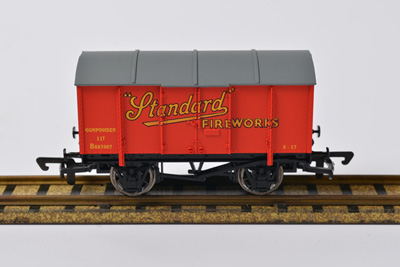 Established in 1891 (as per my article in a recent Wrenn Tracker), The Standard
Fireworks Company was to become the largest manufacturer of fireworks in the UK. Due to the very
nature of their business, they were ideally placed to supply munitions to the Government during both
World War 1 and World War 2. In 1988 Standard Fireworks bought a rival company based in Hemel
Hempstead and Sanquhar, that of Brocks Fireworks. Standard were then themselves bought by the Chinese
manufacturer Black Cat Fireworks in 1998, but whilst the production of fireworks was moved to China,
Huddersfield remains the Head Office of the company in the UK.
Established in 1891 (as per my article in a recent Wrenn Tracker), The Standard
Fireworks Company was to become the largest manufacturer of fireworks in the UK. Due to the very
nature of their business, they were ideally placed to supply munitions to the Government during both
World War 1 and World War 2. In 1988 Standard Fireworks bought a rival company based in Hemel
Hempstead and Sanquhar, that of Brocks Fireworks. Standard were then themselves bought by the Chinese
manufacturer Black Cat Fireworks in 1998, but whilst the production of fireworks was moved to China,
Huddersfield remains the Head Office of the company in the UK.
Original Wrenn Wagon: Issued as W4313P as a Standard Fireworks Gunpowder Van in brown or green.
WRCC Wagon: Issued as WRCC13 as a Standard Fireworks Gunpowder Van in Red. WRCC7, the blue version, had sold out so quickly that many missed it, so this second version was ordered in red. Commissioned as a run of 100 examples. The wagon came with a pair of limited labels authenticating the number made. This version too disappeared off the shelves very quickly!
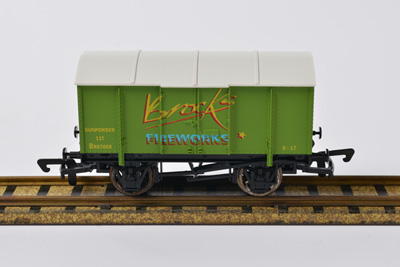 Brocks was the oldest fireworks company in the UK and was originally based in London,
and then Hemel Hempstead and finally Swaffham in Norfolk and Sanquhar in Scotland. It was bought by
Standard Fireworks in 1988.
Brocks was the oldest fireworks company in the UK and was originally based in London,
and then Hemel Hempstead and finally Swaffham in Norfolk and Sanquhar in Scotland. It was bought by
Standard Fireworks in 1988.
WRCC Wagon: Issued as WRCC14 as a Brocks Fireworks Gunpowder Van in green. Commissioned as a run of 100 examples. The wagon came with a pair of limited labels authenticating the number made.
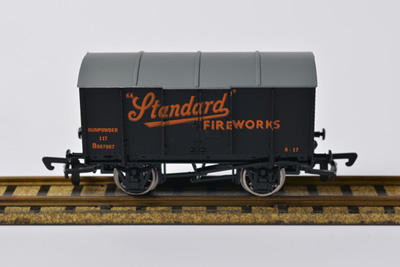 Established in 1891 (as per my article in a recent Wrenn Tracker), The Standard
Fireworks Company was to become the largest manufacturer of fireworks in the UK. Due to the very
nature of their business, they were ideally placed to supply munitions to the Government during both
World War 1 and World War 2. In 1988 Standard Fireworks bought a rival company based in Hemel
Hempstead and Sanquhar, that of Brocks Fireworks. Standard were then themselves bought by the Chinese
manufacturer Black Cat Fireworks in 1998, but whilst the production of fireworks was moved to China,
Huddersfield remains the Head Office of the company in the UK.
Established in 1891 (as per my article in a recent Wrenn Tracker), The Standard
Fireworks Company was to become the largest manufacturer of fireworks in the UK. Due to the very
nature of their business, they were ideally placed to supply munitions to the Government during both
World War 1 and World War 2. In 1988 Standard Fireworks bought a rival company based in Hemel
Hempstead and Sanquhar, that of Brocks Fireworks. Standard were then themselves bought by the Chinese
manufacturer Black Cat Fireworks in 1998, but whilst the production of fireworks was moved to China,
Huddersfield remains the Head Office of the company in the UK.
Original Wrenn Wagon: Issued as W4313P as a Standard Fireworks Gunpowder Van in brown or green.
WRCC Wagon: Issued as WRCC15 as a Standard Fireworks Gunpowder Van in Black with "Fire" lettering. Commissioned as a run of 100 examples. The wagon came with a pair of limited labels authenticating the number made.
 WRCC16 was
the first in a series of 4 wagons from the "Big 4", the Great Western Railway, the Southern Railway,
the London & North Eastern Railway and lastly, but not least the London, Midland & Scottish Railway.
These were all commissioned as 5-plank coal wagons in runs of 100 each. Although many coal wagons have
been produced over the years with these famous letters (GWR, SR, LNER & LMS), these are slightly
different in that they were made in the colours of the Railway Companies i.e. Great Western Green,
Malachite Green, Gresley Blue and finally LMS Maroon; matching the colours of their respective
locomotives.
WRCC16 was
the first in a series of 4 wagons from the "Big 4", the Great Western Railway, the Southern Railway,
the London & North Eastern Railway and lastly, but not least the London, Midland & Scottish Railway.
These were all commissioned as 5-plank coal wagons in runs of 100 each. Although many coal wagons have
been produced over the years with these famous letters (GWR, SR, LNER & LMS), these are slightly
different in that they were made in the colours of the Railway Companies i.e. Great Western Green,
Malachite Green, Gresley Blue and finally LMS Maroon; matching the colours of their respective
locomotives.
WRCC Wagon: Issued as WRCC16 as a Great Western 5-Plank Wagon with coal load, in GWR Green with gold lettering. Commissioned as a run of 100 examples. The wagon came with a pair of limited labels authenticating the number made.
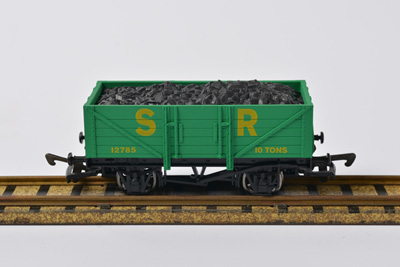 WRCC17 was
the second in a series of 4 wagons from the "Big 4", the Great Western Railway, the Southern Railway,
the London & North Eastern Railway and lastly, but not least the London, Midland & Scottish Railway.
These were all commissioned as 5-plank coal wagons in runs of 100 each. Although many coal wagons have
been produced over the years with these famous letters (GWR, SR, LNER & LMS), these are slightly
different in that they were made in the colours of the Railway Companies i.e. Great Western Green,
Malachite Green, Gresley Blue and finally LMS Maroon; matching the colours of their respective
locomotives.
WRCC17 was
the second in a series of 4 wagons from the "Big 4", the Great Western Railway, the Southern Railway,
the London & North Eastern Railway and lastly, but not least the London, Midland & Scottish Railway.
These were all commissioned as 5-plank coal wagons in runs of 100 each. Although many coal wagons have
been produced over the years with these famous letters (GWR, SR, LNER & LMS), these are slightly
different in that they were made in the colours of the Railway Companies i.e. Great Western Green,
Malachite Green, Gresley Blue and finally LMS Maroon; matching the colours of their respective
locomotives.
WRCC Wagon: Issued as WRCC17 as a Southern Railway 5-Plank Wagon with coal load, in SR Malachite Green. Commissioned as a run of 100 examples. The wagon came with a pair of limited labels authenticating the number made.
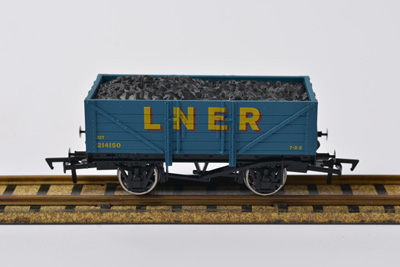 WRCC18 was
the third in a series of 4 wagons from the "Big 4", the Great Western Railway, the Southern Railway,
the London & North Eastern Railway and lastly, but not least the London, Midland & Scottish Railway.
These were all commissioned as 5-plank coal wagons in runs of 100 each. Although many coal wagons have
been produced over the years with these famous letters (GWR, SR, LNER & LMS), these are slightly
different in that they were made in the colours of the Railway Companies i.e. Great Western Green,
Malachite Green, Garter Blue and finally LMS Maroon; matching the colours of their respective
locomotives.
WRCC18 was
the third in a series of 4 wagons from the "Big 4", the Great Western Railway, the Southern Railway,
the London & North Eastern Railway and lastly, but not least the London, Midland & Scottish Railway.
These were all commissioned as 5-plank coal wagons in runs of 100 each. Although many coal wagons have
been produced over the years with these famous letters (GWR, SR, LNER & LMS), these are slightly
different in that they were made in the colours of the Railway Companies i.e. Great Western Green,
Malachite Green, Garter Blue and finally LMS Maroon; matching the colours of their respective
locomotives.
WRCC Wagon: Issued as WRCC18 as a London & North Eastern Railway 5-Plank Wagon with coal load, in LNER Gresley Blue. Commissioned as a run of 100 examples. The wagon came with a pair of limited labels authenticating the number made.

WRCC19 was the fourth in a series of 4 wagons from the "Big 4", the Great Western Railway, the Southern Railway, the London & North Eastern Railway and lastly, but not least the London, Midland & Scottish Railway. These were all commissioned as 5-plank coal wagons in runs of 100 each. Although many coal wagons have been produced over the years with these famous letters (GWR, SR, LNER & LMS), these are slightly different in that they were made in the colours of the Railway Companies i.e. Great Western Green, Malachite Green, Gresley Blue and finally LMS Maroon; matching the colours of their respective locomotives.
Original Wrenn Wagon: Issued as W5032 in red with white load as a 5-Plank Wagon.
WRCC Wagon: Issued as WRCC19 as a London, Midland & Scottish 5-Plank Wagon with coal load, in LMS Maroon with gold lettering. Commissioned as a run of 100 examples. Running number on wagon was 24364. The wagon came with a pair of limited labels authenticating the number made.
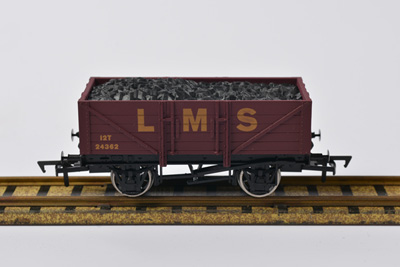 This was the original order for WRCC19 but because of incorrect printing finish, was
returned. I retained 20 examples however and even though these were effectively an error, I decided to
issue them as a WRCC wagon . They sold out in 5 days.
This was the original order for WRCC19 but because of incorrect printing finish, was
returned. I retained 20 examples however and even though these were effectively an error, I decided to
issue them as a WRCC wagon . They sold out in 5 days.
WRCC Wagon: Issued as WRCC19a as a London, Midland & Scottish 5-Plank Wagon with coal load, in LMS Maroon with dark yellow lettering. Issued as a run of 20 examples. Running number on wagon was 24362. The wagon came with a pair of limited labels authenticating the number made.
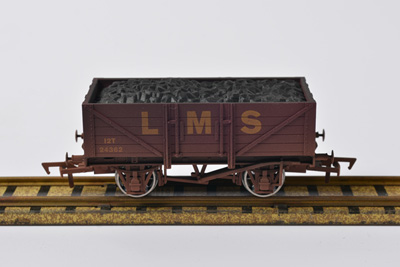 This was the original
order for WRCC19 but because of incorrect printing finish, was returned. I retained 20 examples
however and even though these were effectively an error, I decided to issue them as a WRCC wagon .
They sold out in 5 days.
This was the original
order for WRCC19 but because of incorrect printing finish, was returned. I retained 20 examples
however and even though these were effectively an error, I decided to issue them as a WRCC wagon .
They sold out in 5 days.
WRCC Wagon: Issued as WRCC19a as a London, Midland & Scottish 5-Plank Wagon with coal load, in LMS Maroon with dark yellow lettering. Issued as a run of 20 examples. Running number on wagon was 24362. The wagon came with a pair of limited labels authenticating the number made.
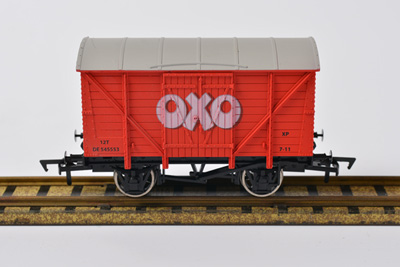 OXO is one the most household
names in the UK. Famous for its original gravy recipe, it has since been expanded to many different
flavours to suit all tastes
OXO is one the most household
names in the UK. Famous for its original gravy recipe, it has since been expanded to many different
flavours to suit all tastes
Original Wrenn Wagon: Issued as W4325P OXO Ventilated Van in White with a red logo.
WRCC Wagon: Issued as WRCC20 as an OXO Ventilated Van in red with a white logo.
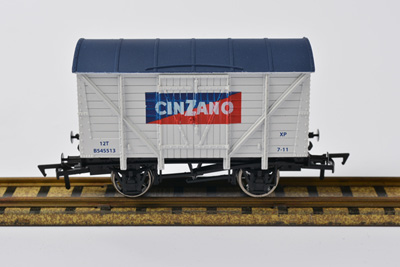 Initially planned as an
addition to the Wrenn range in 1968, this Van was never produced at the time. I have therefore great
pleasure in offering this Cinzano Van as the latest Ventilated Van to be commissioned by the Wrenn
Railways Collectors Club. It is offered in a limited run of 80 pristine examples as well as 20 factory
weathered (see WRCC21A).
Initially planned as an
addition to the Wrenn range in 1968, this Van was never produced at the time. I have therefore great
pleasure in offering this Cinzano Van as the latest Ventilated Van to be commissioned by the Wrenn
Railways Collectors Club. It is offered in a limited run of 80 pristine examples as well as 20 factory
weathered (see WRCC21A).
 Initially planned
as an addition to the Wrenn range in 1968, this Van was never produced at the time. I have therefore
great pleasure in offering this Cinzano Van as the latest Ventilated Van to be commissioned by the
Wrenn Railways Collectors Club. It is offered in a limited run of 80 pristine examples as well as 20
factory weathered (see WRCC21A).
Initially planned
as an addition to the Wrenn range in 1968, this Van was never produced at the time. I have therefore
great pleasure in offering this Cinzano Van as the latest Ventilated Van to be commissioned by the
Wrenn Railways Collectors Club. It is offered in a limited run of 80 pristine examples as well as 20
factory weathered (see WRCC21A).
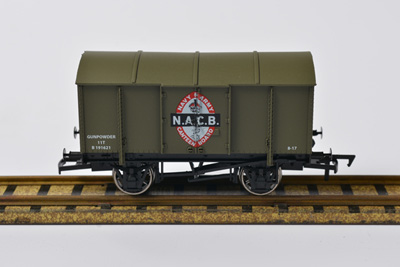 One of
the institutions that all servicemen have fond memories of is the NAAFI (The Navy, Army & Air Force
Institute). From their creation in 1921, they have provided food and other goods to the servicemen of
the British Armed Force all over the world as well as running canteens on board Royal Naval vessels.
In this year of 2014, as we remember the start of WW1 100 years ago, I thought it fitting to
commission a wagon that paid tribute to the work done by this organisation.
One of
the institutions that all servicemen have fond memories of is the NAAFI (The Navy, Army & Air Force
Institute). From their creation in 1921, they have provided food and other goods to the servicemen of
the British Armed Force all over the world as well as running canteens on board Royal Naval vessels.
In this year of 2014, as we remember the start of WW1 100 years ago, I thought it fitting to
commission a wagon that paid tribute to the work done by this organisation.
In name however, the NAAFI did not exist during the 1st World War, the formation occurred over several years as per below:-
- 1892 – Due to corruption in the canteen finances at the 17th Lancers, a lock was placed on the till.
- 1894 – The Canteen and Mess Co-operative Society was founded to consolidate this practice and spread its operation within other regiments.
- 1914 – With the advent of the British Expeditionary Force and its posting overseas, canteens were set up to feed these troops abroad, run by army personnel and simply called Expeditionary Force Canteens.
In Britain, canteens were run by civilian contractors on a non-profit basis. With the sudden massive increase in demand for supplies to servicemen the Army set up the BCRI (The Board of Control for Regimental Institutions), the British Army wanting to control the purchase of canteen goods. This lead to the absorption of The Canteen and Mess Co-operative Society with the new organisation thus benefitting greatly from their knowledge and experience.
- 1916 – Things moved even further forward when the Navy wanted to be part of the new set-up and the name "Navy and Army Canteen Board" (NACB) was born later in 1916.
- 1918 – With the constant development of air power the Air Force also needed canteens and they too started to utilise the services of the NACB.
- 1919 – Post war, the NACB absorbed the Expeditionary Force Canteens.
- 1921 – With Winston Churchill at the helm as Secretary of War, it was agreed that all 3 forces should have a common canteen organisation and thus the NAAFI was created.
The van I have therefore in fact chosen bears the badge of the Navy & Army Canteen Board, as the forerunner of today's NAAFI and whose workers played a vital part during the 1st World War.
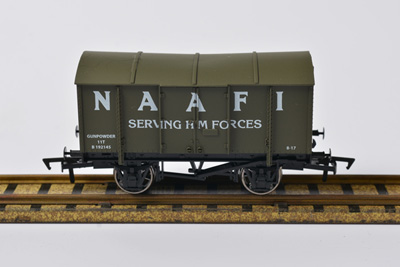 With the issue of the NACB
wagon, it was natural to produce a wagon for the NAAFI. This again is a Gunpowder Van in Khaki livery.
With the issue of the NACB
wagon, it was natural to produce a wagon for the NAAFI. This again is a Gunpowder Van in Khaki livery.
By the start WW2, the NAAFI was firmly established as a key provider and supplier to servicemen. It was all hands to the pumps as the number of NAAFI employees increased from 8,000 between the wars to a peak of 110,000. The number of trading establishments rose from 1,350 to nearly 10,000; this included 800 canteens on seagoing ships and 900 mobile canteens to support the war effort.
Today, the NAAFI still operates in some countries but will be sadly closing all its venues over the next few years.
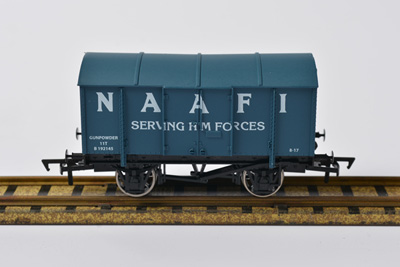 With the issue of the
NACB wagon, it was natural to produce a wagon for the NAAFI. This again is a Gunpowder Van, but this
time in RAF Blue livery!
With the issue of the
NACB wagon, it was natural to produce a wagon for the NAAFI. This again is a Gunpowder Van, but this
time in RAF Blue livery!
By the start WW2, the NAAFI was firmly established as a key provider and supplier to servicemen. It was all hands to the pumps as the number of NAAFI employees increased from 8,000 between the wars to a peak of 110,000. The number of trading establishments rose from 1,350 to nearly 10,000; this included 800 canteens on seagoing ships and 900 mobile canteens to support the war effort.
Today, the NAAFI still operates in some countries but will be sadly closing all its venues over the next few years.
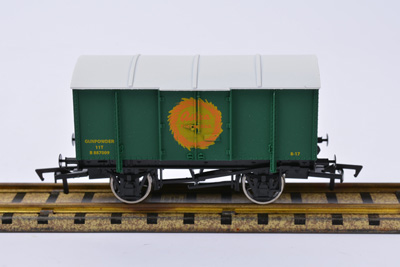
ASTRA FIREWORKS
Founded just after the war in 1946 by two Eastern European immigrants Bertie Yellin and Dr Paul Lax.
They set up in Richborough near Sandwich to begin full-scale manufacture in 1948 and were one of the most popular 1960's and 70's brands. Richborough was probably chosen as it had been a munitions storage facility during WW1 with the buildings left in situ! The Sandwich site, next to the River Stour, consisted of several dozen small sheds separated by sheets of corrugated iron.
By the early 1950s they had an office in London at 102 Cleveland Street, London W.1. The street has an old claim to fame as Charles Dickens used to live at Number 22 and today the street is also home to the BT Tower!
The Richborough site itself was built on what was once a resettlement camp for dispossessed migrants/refugees. During WW2, many Jews and other refugees were accommodated here, where repatriation wasn't an option. Part of the site was also used to accommodate British troops on their way to fight on the European mainland.
Astra produced many different fireworks such as Red Fountain, Silver Fountain, Mars Rocket, Whirlwind, Flower Pot, Crackling Cauldron, Aerial Attack, Vertical Plane, Flood Light, Stromboli, Wheel, Red Lantern, Sparkling Fountain and many others.
They were forced to cease all home-based manufacture after a serious fire in 1989, but they continued with imported Chinese goods until the closure in 1997. The Sandwich site was eventually "completely" demolished. Shortly after closure the "Astra" name was acquired and still survives under the Cosmic brand label.
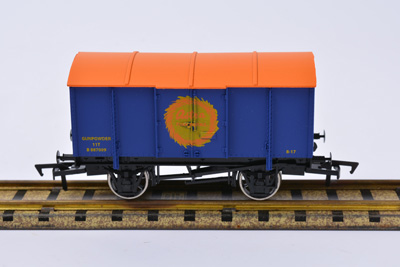
ASTRA FIREWORKS
Founded just after the war in 1946 by two Eastern European immigrants Bertie Yellin and Dr Paul Lax.
They set up in Richborough near Sandwich to begin full-scale manufacture in 1948 and were one of the most popular 1960's and 70's brands. Richborough was probably chosen as it had been a munitions storage facility during WW1 with the buildings left in situ! The Sandwich site, next to the River Stour, consisted of several dozen small sheds separated by sheets of corrugated iron.
By the early 1950s they had an office in London at 102 Cleveland Street, London W.1. The street has an old claim to fame as Charles Dickens used to live at Number 22 and today the street is also home to the BT Tower!
The Richborough site itself was built on what was once a resettlement camp for dispossessed migrants/refugees. During WW2, many Jews and other refugees were accommodated here, where repatriation wasn't an option. Part of the site was also used to accommodate British troops on their way to fight on the European mainland.
Astra produced many different fireworks such as Red Fountain, Silver Fountain, Mars Rocket, Whirlwind, Flower Pot, Crackling Cauldron, Aerial Attack, Vertical Plane, Flood Light, Stromboli, Wheel, Red Lantern, Sparkling Fountain and many others.
They were forced to cease all home-based manufacture after a serious fire in 1989, but they continued with imported Chinese goods until the closure in 1997. The Sandwich site was eventually "completely" demolished. Shortly after closure the "Astra" name was acquired and still survives under the Cosmic brand label.
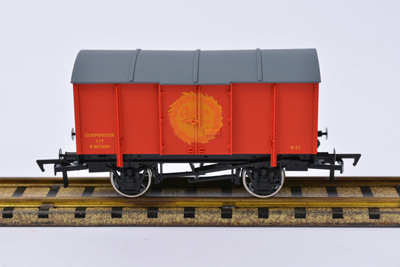
ASTRA FIREWORKS
Founded just after the war in 1946 by two Eastern European immigrants Bertie Yellin and Dr Paul Lax.
They set up in Richborough near Sandwich to begin full-scale manufacture in 1948 and were one of the most popular 1960's and 70's brands. Richborough was probably chosen as it had been a munitions storage facility during WW1 with the buildings left in situ! The Sandwich site, next to the River Stour, consisted of several dozen small sheds separated by sheets of corrugated iron.
By the early 1950s they had an office in London at 102 Cleveland Street, London W.1. The street has an old claim to fame as Charles Dickens used to live at Number 22 and today the street is also home to the BT Tower!
The Richborough site itself was built on what was once a resettlement camp for dispossessed migrants/refugees. During WW2, many Jews and other refugees were accommodated here, where repatriation wasn't an option. Part of the site was also used to accommodate British troops on their way to fight on the European mainland.
Astra produced many different fireworks such as Red Fountain, Silver Fountain, Mars Rocket, Whirlwind, Flower Pot, Crackling Cauldron, Aerial Attack, Vertical Plane, Flood Light, Stromboli, Wheel, Red Lantern, Sparkling Fountain and many others.
They were forced to cease all home-based manufacture after a serious fire in 1989, but they continued with imported Chinese goods until the closure in 1997. The Sandwich site was eventually "completely" demolished. Shortly after closure the "Astra" name was acquired and still survives under the Cosmic brand label.

SWAN VESTAS
The Swan brand started in 1883 owned by the Collard & Kendall match company in Bootle. The name Swan Vestas is now a household name and was first used in 1906 when Bryant & May took over the company. This evolved further in 1927 when Swedish Match merged with Bryant & May. Originally called the "Smokers Match" this famous brand was firmly established as Britain's best-selling match by the 1930s.
In fact, Bryant & May, the owners at the onset of WW2, even bought a Spitfire aircraft for the Royal Air Force, naming it of course "The Swan"!!
The matches themselves were 4" in length and I am told ideal for smokers of cigars and pipes!
From a collector's point of view if you ever see or find a Swan Vestas matchbox with a left facing swan then buy it as these are quite rare!!
In 2008, Swan celebrated their 125th anniversary and commissioned 125 golden headed matches hidden in Swan Vestas boxes. Each finder receiving £1,000!!!!
Swan Vestas matches are today produced from locally grown Aspen, by Swedish Match in Sweden.
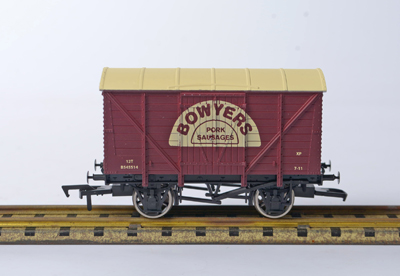
BOWYERS
Bowyers started as a grocers shop run by Abraham Bowyer in 1805 in Trowbridge, Wiltshire.
In the early 20th century Bowyers bought Wiltshire Bacon based in Chippenham as well as Calne & Harris. They moved into Innox Mills in Trowbridge in 1954. Bowyers then bought an Amersham sausage and pie producer called Brazil's in 1970 for £3 million.
After subsequently being acquired by Northern Foods in 1985 they then merged with Palethorpes & Pork Farms in 1990.
They continued until 2001 when the 2 businesses were sold to The Kerry Group. This did not last long because they were then bought by Vision Capital in 2007. Then, thanks to an EU law that prevented Melton Mowbray Pies from being produced from outside a 40 mile radius of Melton Mowbray, Pork Farms decided to close the Trowbridge site so as not to lose the ability to produce Melton Mowbray Pies.
The Trowbridge site remained closed for several years before being bought for development in 2014 and subsequently demolished. It is currently the subject of discussion under planning legislation in Trowbridge.
Bowyer's products are still produced today.

PALETHORPES
Palethorpes was established by Henry Palethorpe in the mid-1850s in Birmingham.
The company prospered and expanded and then in 1896 moved to Tipton Green in Sandwell.
Thanks to its processed meat products it was chosen to supply the British Army during WW1.
The company continued with moderate success during and after WW2 but then lost ground to the emerging supermarket businesses. They then built a purpose-built factory at Market Drayton in 1967. However having overstretched its finances it was bought by Bibby 2 years later.
Further changes in ownership followed before the subsequent merger with Bowyers under the Northern Foods banner in 1990.
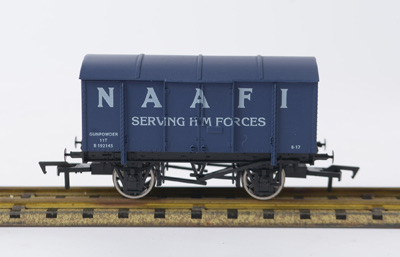 Coming Soon
Coming Soon  Coming Soon
Coming Soon